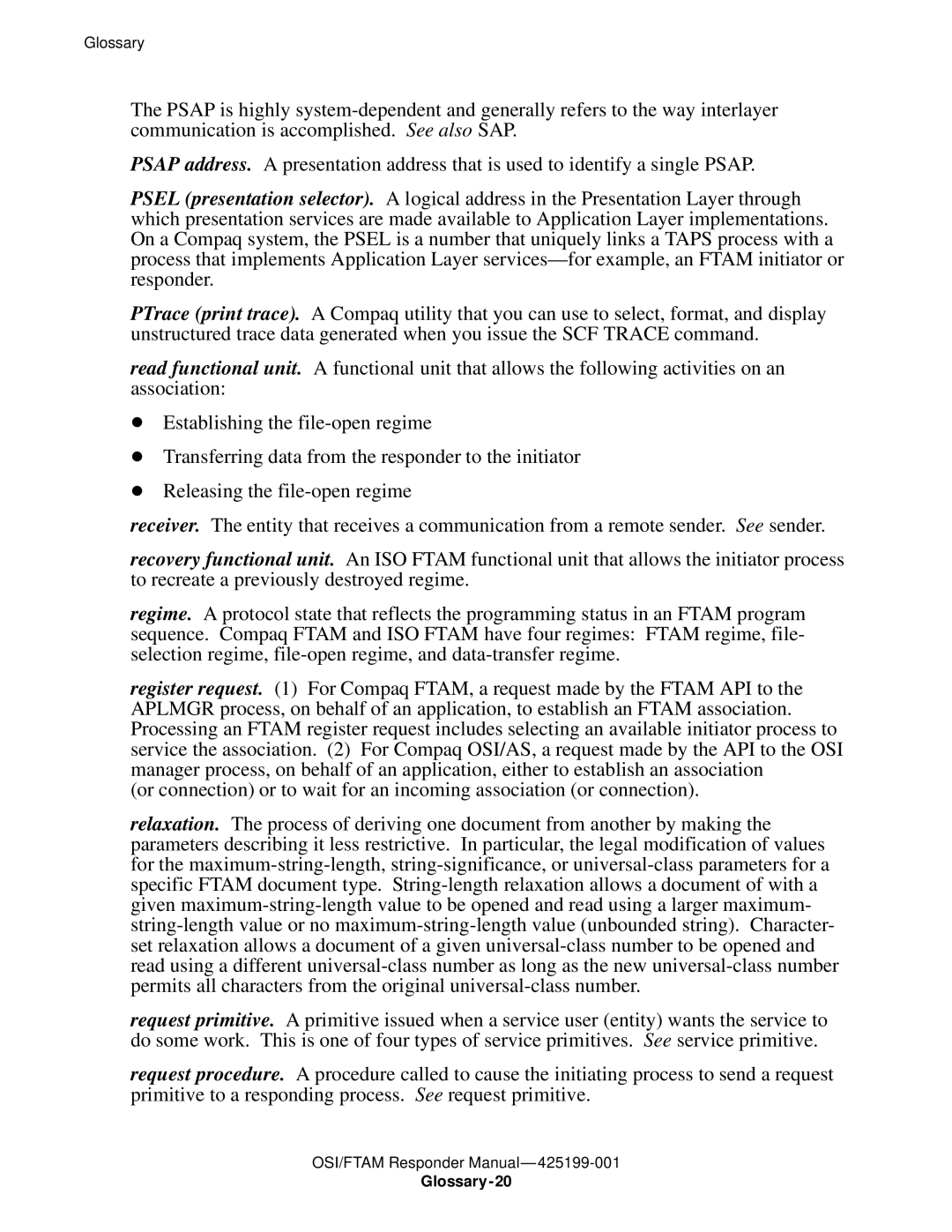Glossary
The PSAP is highly
PSAP address. A presentation address that is used to identify a single PSAP.
PSEL (presentation selector). A logical address in the Presentation Layer through which presentation services are made available to Application Layer implementations. On a Compaq system, the PSEL is a number that uniquely links a TAPS process with a process that implements Application Layer
PTrace (print trace). A Compaq utility that you can use to select, format, and display unstructured trace data generated when you issue the SCF TRACE command.
read functional unit. A functional unit that allows the following activities on an association:
•
•
•
Establishing the
Transferring data from the responder to the initiator Releasing the
receiver. The entity that receives a communication from a remote sender. See sender.
recovery functional unit. An ISO FTAM functional unit that allows the initiator process to recreate a previously destroyed regime.
regime. A protocol state that reflects the programming status in an FTAM program sequence. Compaq FTAM and ISO FTAM have four regimes: FTAM regime, file- selection regime,
register request. (1) For Compaq FTAM, a request made by the FTAM API to the APLMGR process, on behalf of an application, to establish an FTAM association. Processing an FTAM register request includes selecting an available initiator process to service the association. (2) For Compaq OSI/AS, a request made by the API to the OSI manager process, on behalf of an application, either to establish an association
(or connection) or to wait for an incoming association (or connection).
relaxation. The process of deriving one document from another by making the parameters describing it less restrictive. In particular, the legal modification of values for the
request primitive. A primitive issued when a service user (entity) wants the service to do some work. This is one of four types of service primitives. See service primitive.
request procedure. A procedure called to cause the initiating process to send a request primitive to a responding process. See request primitive.
